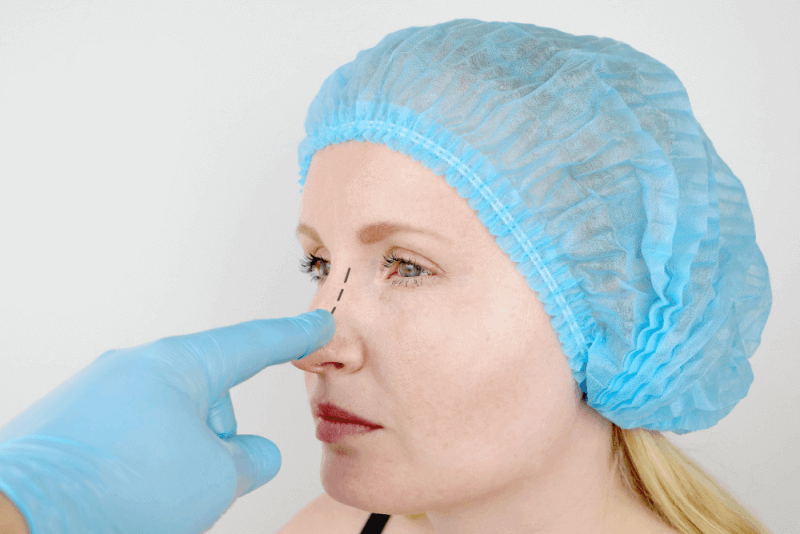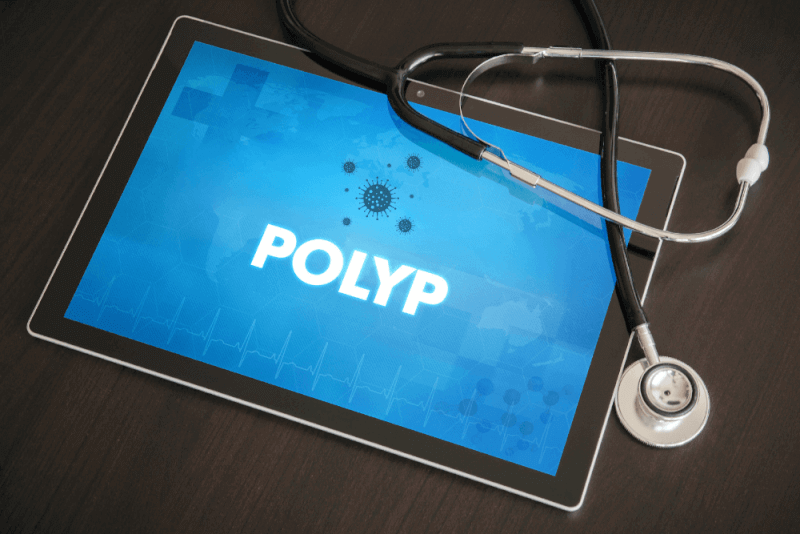What is Nose Aesthetics (Rhinoplasty)?
Rhinoplasty, also known as rhinoplasty, is an aesthetic operation performed to treat any problem in the appearance or function of the nose. The nose, which is one of the most striking organs in the facial area, can cause aesthetic anxiety due to deformity or poor appearance. Problems such as low self-confidence or self-dislike due to aesthetic anxiety cause problems in our daily lives.
An aesthetically distorted nose also greatly affects correct breathing. Healthy breathing is very important for human life and a healthy breath offers a healthy life comfort in every aspect. Rhinoplasty is a frequently applied method for people with breathing problems or aesthetic concerns.
Nose Aesthetics (Rhinoplasty) Diagnostic Methods
When it is decided to have a rhinoplasty, a detailed interview with the doctor is first provided and a physical examination is performed. The patient's complaints are evaluated, the desired changes in the nose and the suitability of these changes to the facial structure are determined. It is checked whether there is a condition in the nose that may prevent the rhinoplasty operation, and if there is no condition, general health checks are also performed.
It is checked whether there are obstacles such as a chronic disease, bleeding disorders, etc. If there is no obstacle to rhinoplasty, a suitable time for the operation is determined. Communication between patient and doctor is very important here. The patient should convey his/her expectations and wishes to the doctor in a good way. An approximate image of the targeted image can be obtained by taking photographs of the nose from different angles, and the use of visual tools during this planning period is a very useful technique.
When Nose Aesthetics (Rhinoplasty) is Required
Rhinoplasty is one of the most preferred operations for both women and men. It is generally preferred for aesthetic concerns, but many people with breathing problems also have this surgery. There are many reasons for rhinoplasty, some of them are:
- Congenital or developmental deformities in the nose
- Curvature or arched structure formed in the nasal bone
- The nose is too small or too big according to the face shape and structure
- Low nose tip, sharpness, congestion, asymmetrical appearance
- Damage after any trauma
- Breathing problems due to structural disorders
- Rhinoplasty operation is performed due to problems such as the individual's discomfort with the appearance of his nose and aesthetic concerns.
Rhinoplasty Surgery
Rhinoplasty operation is a very common method in order to make the nose, which is one of the most striking places in facial anatomy, look more aesthetic and function more efficiently. The aim of rhinoplasty surgery is to eliminate the aesthetic concerns of the patient and to bring the nasal functions into balance.
In some cases, there may be a lack of oxygen in the body due to deformity. This significantly reduces the quality of life. It causes problems such as decreased sleep quality, snoring, fatigue, weakness, and increased effort due to lack of oxygen in the lungs. Thanks to the rhinoplasty operation, such problems end and your quality of life improves considerably.
Non-Surgical Rhinoplasty
Although rhinoplasty operations are highly preferred, in some cases aesthetics can be applied without the need for surgery. Non-surgical rhinoplasty, which does not require a surgical procedure, is a lower-risk application. But non-surgical nose aesthetics are not permanent. It is applied in cases such as nose plumping, nasal tip lifting, nasal curvatures. However, it is not applied in cases such as nose reduction or arched nose, fracture. It is performed by injecting filler into the area that needs to be corrected.
Although non-surgical rhinoplasty is not permanent, it may vary according to the patient's body structure, filling material and quality. Non-surgical rhinoplasty takes an average of 20-30 minutes and does not require hospitalization.
A plan is prepared by determining the filling points according to the patient's expectations and needs, then anesthetic cream is applied to the filling area and the filling procedure is performed without the need for general anesthesia. No stitches or incisions are made. Non-surgical rhinoplasty, which is planned in accordance with the facial contours of the patients, provides a very natural appearance.
Rhinoplasty Treatment Types
Many different types are utilized during rhinoplasty. In order to decide what type of rhinoplasty is most suitable for the person, the patient should be in good communication with his/her doctor. Since rhinoplasty operations are both aesthetically pleasing and functionally therapeutic, it is important to choose the most appropriate type of surgery. Some of the types of rhinoplasty are as follows;
- Closed rhinoplasty
- Open rhinoplasty
- Endoscopic rhinoplasty
- Dynamic rhinoplasty
- Three-dimensional rhinoplasty
- Rhinoplasty without tampons
The most suitable type of rhinoplasty should be selected according to the shape of the nose and the procedure to be performed.
Closed Rhinoplasty
In the closed rhinoplasty procedure, the application is performed through the nostrils with the help of appropriate medical devices. There are no stitch marks or incision marks in closed rhinoplasty. Since the nose is not opened, the working area is a little more limited, so it is more frequently preferred in mild nose shaping, in cases that do not require much intervention to the tip of the nose, and in minor nasal deformities.
It is a slightly more advantageous aesthetic type compared to open surgery. In closed rhinoplasty, small incisions are made in the nose and these incisions are not visible from outside the nose. The recovery time is shorter compared to open surgery because the vessels at the tip of the nose are protected and blood circulation is not disturbed, so less edema occurs. Since there is no incision or stitches on the outside of the nose, it greatly reduces the pain problem. As in open surgery, it is applied under general anesthesia, not local anesthesia.
Open Rhinoplasty
Open rhinoplasty is one of the most commonly used rhinoplasty methods. In this method, an incision is made on the skin part of the nose, in the middle of the two nostrils and the skin of the nose is lifted. After the skin is removed, bone, cartilage and the tip of the nose are exposed. Since the nasal structure is visible, it will be easier to intervene in this way.
The choice of open or closed techniques should be decided by the doctor and the patient during the examination. A method suitable for the structure of the nose and the patient's complaints is determined. If there are multiple problems in the nasal structure, it will be easier to apply open rhinoplasty.
It is an operation that allows the person to have the desired nose structure and breathe easily. However, for a while after the surgery, the stitch mark will be visible on the incision part of the nose. Over time, the incision scar disappears and becomes invisible. This does not occur in closed rhinoplasty. Since the back of the nose is completely open, it can be shaped very easily. If we count some advantages of open rhinoplasty;
- Since the entire nose structure is in the center, the desired changes are easily made.
- The back of the nose is shaped much more easily.
- In cases of bleeding, control is easier.
- It is easier to control than closed rhinoplasty.
- It is a longer operation than closed surgery and the recovery period is a little longer, but the interventions during the operation are performed more easily and everything is seen clearly.
Endoscopic Rhinoplasty (Rhinoplasty)
In endoscopic rhinoplasty, surgery is performed by entering the nostrils with a device called endoscope without opening the nose as in open surgery. In the endoscopic method, there is a faster recovery process after surgery. The endoscopic method, which is used in many various surgeries, provides great convenience in rhinoplasty.
The endoscope device is a thin tube with a diameter of 1-2 mm and contains a light to illuminate the area during surgery, a connection and camera to project images on the screen, and some medical instruments that are miniaturized to perform millimeter operations. When it is reflected on the screen, it should be magnified and the reflected image should be processed flawlessly.
The procedures performed in endoscopic rhinoplasty are more precise and accordingly, postoperative trauma is minimized. Conditions such as bruises, tissue healing and swelling that occur after surgery heal much more quickly. There are many different techniques in rhinoplasty surgery.
The doctor determines the most suitable technique for the person. Endoscopic rhinoplasty is not suitable for some patients. The person determines the appropriate surgical method and if the doctor agrees, they meet in a common area. In some cases, a different method may be preferred because not every technique is suitable for each person.
Dynamic Rhinoplasty
Rhinoplasty is an aesthetic operation to correct deformities and functional disorders in the nose. One of the points to be considered when performing rhinoplasty is a nose that is compatible with facial measurements. And of course, one of the most important things is that the nose is natural. For the nose to be natural, especially the tip of the nose should be mobile.
One of the issues that many people are uncomfortable with in rhinoplasty is that the tip of the nose does not move. When the tip of the nose is not mobile, the natural appearance is lost. If the tip of the nose is not mobile, it brings problems such as not being able to sleep on the face or feeling discomfort when blowing the nose. Dynamic rhinoplasty is used to ensure that the tip of the nose and facial expressions can move together.
In the dynamic rhinoplasty method, no stitches are applied to the place that allows the tip of the nose to move and the muscle tissue is not damaged. Therefore, the tip of the nose can easily move right, left, up and down. Before dynamic rhinoplasty, the movements of the tip of the nose during the patient's behaviors such as speaking and laughing should be examined.
Before the procedure, the patient's nose photos are taken from different angles with different facial expressions. During the surgery, some structures are preserved and therefore the flexibility of the tip of the nose is preserved. While the shape and function disorders in the nose are corrected, the surgery should be completed by moving the tip of the nose. It is performed under general anesthesia. When structural rhinoplasty is performed, the tip of the nose remains like a stone without moving, but this is prevented in dynamic rhinoplasty. Before dynamic rhinoplasty, it is very obvious from the outside that people have undergone surgery, while in dynamic rhinoplasty it is not understood at all.
Three Dimensional Rhinoplasty
Rhinoplasty is an important operation that determines the shape of the face. For this, thanks to three-dimensional devices, the person can be shown on average what kind of nose he will have after surgery without rhinoplasty surgery. In this way, people can express more clearly on the image what kind of shape they want in their nose before surgery.
Three-dimensional imaging is a method used in aesthetic methods. With the help of special software on the high-resolution photographs on the device, an image close to the image that will be formed after the surgery is obtained. Three-dimensional rhinoplasty is a method that gives the patient a lot of confidence. It is applied as a method in which the doctor can easily decide what kind of nose he wants to have or the changes he wants.
Tamponless Rhinoplasty
The nasal tampon is placed in the patient's nose after nose surgeries. When rhinoplasty is performed, these tampons, which are used to adhere the nasal skeleton and the separated parts to the surfaces, are a very uncomfortable and frightening situation for people. In fact, the job of the tampon is to speed up the attachment of the part inside the nose to the skeleton. It prevents the swelling in the nose from sticking together, stops bleeding that may occur after rhinoplasty, absorbs the leaks after surgery.
In unbuffered rhinoplasty, a silicone tampon is placed in the nose to avoid discomfort caused by the tampon. There is much less pain and discomfort with this silicone tampon. In some patients, nothing is implanted. This situation varies according to the patient's body structure and the condition of the nose. When a tampon is worn, breathing is particularly difficult. In tamponless rhinoplasty, such situations do not occur and the person has a very comfortable process at the end of the surgery.










